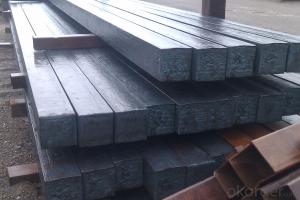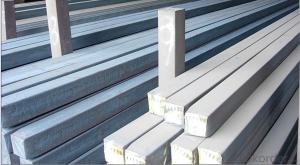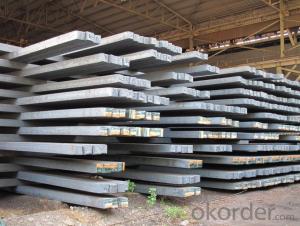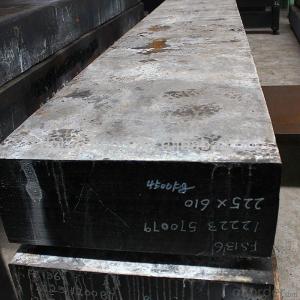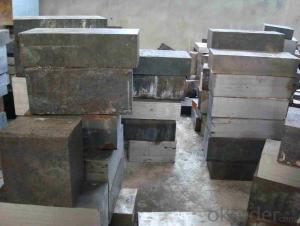Prime quality prepainted galvanized steel 720mm
- Loading Port:
- Tianjin
- Payment Terms:
- TT OR LC
- Min Order Qty:
- 100 m.t.
- Supply Capability:
- 10000 m.t./month
OKorder Service Pledge
OKorder Financial Service
You Might Also Like
Construction building material galvanized color prepainted cold
rolled steel coil
Prepainted steel sheet is coated with organic layer, which provides higher anti-corrosion property and
a longer lifespan than that of galvanized steel sheets.
The base metals for prepainted steel sheet consist of cold-rolled, HDG electro-galvanized and hot-dip
Alu-zinc coated. The finish coats of prepainted steel sheets can be classified into groups as follows:
polyester, silicon modified polyesters, polyvinylidene fluoride, high-durability polyester, etc
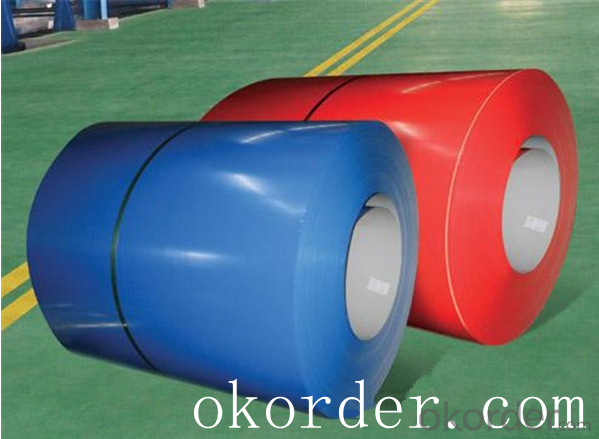
Standard and Grade :
Pre-paint galvanized steel coil | ||||
ASTM A755M-03 | EN10169:2006 | JISG 3312-2012 | ||
Commercial quality | CS | DX51D+Z | CGCC | |
Structure steel | SS GRADE 230 | S220GD+Z | CGC340 | |
SS GRADE 255 | S250GD+Z | CGC400 | ||
SS GRADE 275 | S280GD+Z | CGC440 | ||
SS GRADE 340 | S320GD+Z | CGC490 | ||
SS GRADE550 | S350GD+Z | CGC570 | ||
S550GD+Z | ||||
Application:
Outdoor | Roof, roof structure, surface sheet of balcony, frame of window, door of garage, rolled shutter door, booth, Persian blinds, cabana, etc |
Indoor | Door, isolater, frame of door, light steel structure of house, home electronic appliances, ect. |
Specifications
Commodity Name: Prepainted Galvanized Steel Coil
Standard: AISI, ASTM, DIN, GB, JIS
Grade: TDC52D+Z
Thickness 0.13-8.0mm
Width:600mm-1350mm
Zinc Coating:275g/m2
Polyester Coating Thickness:Top and Back coating thickness depend by Buyer Requirement.
Polyester Coating Type:2/2,1/2m,1/2.
Polyester Type: Polyester, silicone modified polyester, high durability polyester (HDP), polyvinylidene fluoride (PVDF)
Unit Roll Weight:5-20tons
Place of Origin Shanghai , China (Mainland)
Surface Treatment :Color Coated
Manufacture Progress:HRC-CRC-GALVANIZED-COLOR COATED
Application : Construction, electrical, transportation, steel plant, composite board plant, steel tile factory
Payment & Shipping Terms:T/T ,L/C, and FOB CHINA
Minimum Order Quantity: 25Tons
Packge Type: Moisture-proof paper inner,Steel outside,Bundle by steel rope.
Package in Container : Wood as a foot pad, wire rope reinforcement,PPGI steel coil tied together by steel rope.
- Q:The role of carbon content in steels
- 2., the formation of carbide structure, can improve the hardness and wear resistance of steel, such as cementite, or Fe3C, that is, carbide organizationTherefore, the higher the carbon content in carbon steel, the higher the strength and hardness of the steel, but the plasticity and toughness will also be reduced. On the contrary, the lower the carbon content, the higher the plasticity and toughness of the steel, and its strength and hardness will also decrease
- Q:How are steel billets used in the production of agricultural irrigation systems?
- Steel billets are an essential component in the production of agricultural irrigation systems. These billets, which are semi-finished steel products, are used to create various components of irrigation systems such as pipes, fittings, and valves. When manufacturing irrigation pipes, steel billets serve as the raw material that undergoes a series of processes to form seamless or welded pipes. The billets are heated and then passed through a piercing mill, where they are further elongated and shaped into a hollow tube. These tubes are then stretched and rolled to achieve the desired diameter and thickness. The resulting steel pipes are strong, durable, and resistant to corrosion, making them ideal for use in agricultural irrigation systems. Steel billets are also used to produce fittings and valves for irrigation systems. Fittings such as elbows, tees, and reducers are manufactured by shaping and machining steel billets to meet specific size and shape requirements. These fittings are crucial in connecting and directing water flow within the irrigation system. Additionally, steel billets are sometimes used in the production of pump housings and other structural components of irrigation systems. Due to their strength and stability, steel billets provide the necessary support and durability required in these applications. Overall, steel billets play a vital role in the production of agricultural irrigation systems by providing a reliable and robust material for pipes, fittings, valves, and other components. Their use ensures the longevity and efficiency of these systems, allowing for effective water distribution and irrigation in agricultural fields.
- Q:How are steel billets used in the production of marine parts?
- Steel billets serve as a vital element in the manufacturing process of marine parts. These semi-finished steel products act as the raw material for shaping and forming a variety of marine components. To commence, steel billets undergo a procedure known as hot rolling. This involves subjecting them to high temperatures and passing them through rolling mills to attain different shapes and sizes. By undergoing hot rolling, the steel's grain structure is refined, thereby enhancing its mechanical properties and rendering it suitable for marine applications. Once the desired shape and size are achieved, these billets are further processed using various techniques such as forging, machining, and welding to create specific marine parts. Propeller shafts, rudder stocks, hull frames, and bulkheads are examples of marine components produced using steel billets. The exceptional strength and durability of steel make it an excellent choice for manufacturing marine parts, as it can withstand the harsh conditions of saltwater, extreme temperatures, and heavy loads. Moreover, steel billets can be easily customized to meet specific design requirements, ensuring the production of precise and dependable marine parts. Additionally, steel billets play a crucial role in the repair and maintenance of marine vessels. When existing components need replacement, steel billets can be shaped and machined to match the exact specifications of the original parts. This guarantees compatibility and seamless integration, facilitating efficient repairs and ensuring the uninterrupted operation of marine vessels. In conclusion, steel billets are indispensable in the production of marine parts as they provide the necessary raw material for shaping and forming various components. The combination of high strength, durability, and customization capabilities makes steel billets an ideal choice for marine applications, ensuring the reliability and performance of marine vessels.
- Q:How does the composition of steel affect the properties of steel billets?
- The composition of steel, including the ratios of different elements and the impurities present, significantly influences the properties of steel billets. For instance, the amount of carbon in steel affects its strength and hardness, with higher carbon content resulting in harder and stronger steel. Alloying elements like chromium, nickel, and molybdenum can be added to enhance specific properties such as corrosion resistance, heat resistance, or toughness. Furthermore, impurities like sulfur and phosphorus can negatively impact the ductility and weldability of steel. Hence, the composition plays a crucial role in determining the overall quality and performance of steel billets.
- Q:What is the typical composition of steel billets?
- The composition of steel billets can vary depending on specific requirements and intended use, resulting in a typical composition that primarily consists of iron and carbon. Other elements are added to enhance certain properties. The carbon content in steel billets typically ranges from 0.1% to 0.3%. Besides iron and carbon, steel billets often contain small amounts of manganese, silicon, sulfur, and phosphorus. Manganese improves strength, hardness, and heat treatment response. Silicon is commonly added to enhance fluidity during casting. Sulfur and phosphorus are impurities that need to be minimized as they can adversely affect machinability and mechanical properties. Additionally, steel billets may contain alloying elements like chromium, nickel, molybdenum, and vanadium to impart specific properties. Chromium improves corrosion resistance, nickel enhances toughness and ductility, molybdenum increases high-temperature strength, and vanadium improves wear resistance. In summary, the composition of steel billets is carefully controlled to achieve desired mechanical, physical, and chemical properties required for subsequent processing and final applications of the steel.
- Q:What are the different surface finishes available for tool steel billets?
- Tool steel billets offer a range of surface finishes to cater to different requirements and applications. Some commonly used surface finishes are as follows: 1. Hot Rolled: This is the most basic surface finish achieved by hot rolling the steel billets, resulting in a rough and scaled surface. It is suitable for applications where a smooth finish is not crucial. 2. Cold Rolled: For a smoother and refined surface finish, the steel billets undergo cold rolling. Cold rolled surfaces are preferred when a higher degree of precision and accuracy is required. 3. Turned: By using a lathe to remove material, the steel billet can achieve a smooth and polished surface finish. Turned surfaces are commonly employed in applications where aesthetic appearance and precision components are essential. 4. Ground: Grinding is employed to achieve a flat and smooth surface finish on tool steel billets. It is commonly utilized when a high level of precision and dimensional accuracy is necessary, particularly in tooling applications. 5. Polished: This is the most refined surface finish achieved by using abrasives and polishing compounds, resulting in a mirror-like surface. Polished surfaces are often chosen for decorative or high-end applications where a visually appealing finish is desired. 6. Coated: Additionally, tool steel billets can be coated with various materials to enhance their surface properties. Coatings such as nitride, carbide, or diamond-like carbon (DLC) can improve hardness, wear resistance, and friction properties. The choice of surface finish for tool steel billets depends on specific requirements, including desired accuracy, appearance, and performance characteristics.
- Q:What are the main factors affecting the hardenability of alloy steel billets?
- The main factors affecting the hardenability of alloy steel billets include the chemical composition of the alloy, the grain size and distribution, the cooling rate during heat treatment, and the presence of alloying elements such as carbon, manganese, chromium, and molybdenum. These factors determine the ability of the steel to form and retain a hardened structure, thus affecting its overall hardness and strength properties.
- Q:How do steel billets contribute to the manufacturing of packaging materials?
- Packaging materials manufacturing heavily relies on steel billets, especially those that necessitate strength and endurance. These semi-finished steel products are typically acquired through continuous casting or hot rolling. Steel billets significantly contribute to the production of steel drums, a pivotal aspect of packaging material manufacturing. Steel drums find extensive use in industries like chemicals, petroleum, and food processing for storing and transporting diverse substances. The robustness and rigidity of steel billets make them an ideal choice for manufacturing these drums, guaranteeing the integrity of the packaging remains uncompromised even under the weight and pressure of their contents. Apart from steel drums, steel billets are also indispensable in the creation of metal cans. Metal cans enjoy broad application in packaging food, beverages, and other consumer goods. They create an excellent barrier against moisture, light, and oxygen, thereby preserving and safeguarding the packaged items. Steel billets are employed in fabricating the can bodies, lids, and bottoms, imparting requisite strength and stability to withstand the pressure during canning and transportation. Furthermore, steel billets play a vital role in manufacturing steel straps and bands for securing and bundling packages. These straps effectively secure heavy and bulky items, preventing shifting or damage during transit. The high tensile strength of steel billets ensures the straps can adequately hold packages together, providing stability and protection. Moreover, steel billets are occasionally utilized in producing corrugated steel sheets. These sheets are commonly employed in manufacturing heavy-duty packaging materials like crates and pallets. Corrugated steel sheets possess excellent strength and rigidity, making them suitable for transporting heavy items over long distances. Steel billets undergo a series of processes, such as rolling, cutting, and shaping, to transform into these sheets, ensuring the final product meets the necessary specifications. In conclusion, steel billets play a pivotal role in packaging material manufacturing. Their strength, durability, and versatility make them ideal for producing steel drums, metal cans, straps, and corrugated steel sheets. By utilizing steel billets, manufacturers can create packaging materials capable of meeting the demands of diverse industries, ensuring the safe and secure transportation of goods.
- Q:What are the common testing methods used for quality control of steel billets?
- The common testing methods used for quality control of steel billets include visual inspection, dimensional measurements, chemical analysis, and mechanical testing. Visual inspection involves examining the surface of the billets for any defects or abnormalities. Dimensional measurements ensure that the billets meet the specified size and shape requirements. Chemical analysis determines the composition of the steel, checking for the presence of impurities or elements that may affect the quality. Mechanical testing involves subjecting the billets to various tests such as hardness testing, tensile testing, and impact testing to evaluate their strength and other mechanical properties. These testing methods ensure that the steel billets meet the required quality standards.
- Q:How do steel billets contribute to the overall energy efficiency of a structure?
- Steel billets, which are semi-finished steel products, play a crucial role in enhancing the overall energy efficiency of a structure. Firstly, steel billets are produced using scrap steel, which reduces the demand for raw materials and minimizes energy consumption associated with extracting and processing iron ore. Additionally, the production of steel billets involves recycling, which significantly reduces the energy required compared to the production of new steel from scratch. Moreover, steel billets can be conveniently shaped and molded to meet the specific design requirements of a structure, ensuring minimal wastage of materials and energy. Furthermore, steel possesses excellent thermal conductivity, allowing structures made from steel billets to efficiently distribute and regulate temperature, reducing the energy required for heating or cooling. The durability and longevity of steel billets also contribute to the energy efficiency of a structure as it reduces the need for frequent repairs or replacements. Overall, the utilization of steel billets in construction promotes energy efficiency through sustainable sourcing, recycling, reduced wastage, thermal conductivity, and long-term reliability.
1. Manufacturer Overview |
|
|---|---|
| Location | |
| Year Established | |
| Annual Output Value | |
| Main Markets | |
| Company Certifications | |
2. Manufacturer Certificates |
|
|---|---|
| a) Certification Name | |
| Range | |
| Reference | |
| Validity Period | |
3. Manufacturer Capability |
|
|---|---|
| a)Trade Capacity | |
| Nearest Port | |
| Export Percentage | |
| No.of Employees in Trade Department | |
| Language Spoken: | |
| b)Factory Information | |
| Factory Size: | |
| No. of Production Lines | |
| Contract Manufacturing | |
| Product Price Range | |
Send your message to us
Prime quality prepainted galvanized steel 720mm
- Loading Port:
- Tianjin
- Payment Terms:
- TT OR LC
- Min Order Qty:
- 100 m.t.
- Supply Capability:
- 10000 m.t./month
OKorder Service Pledge
OKorder Financial Service
Similar products
New products
Hot products
Related keywords
